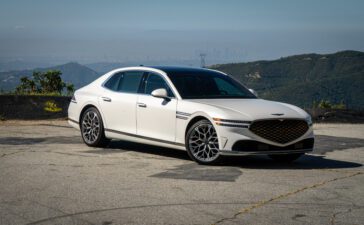This is a psyop. Go buy flex fuel.
But wait, how does this crap even work? Isn’t this just alcoholic corn juice? Isn’t a high alcohol content bad for engines? Well, I have the answers: Works well enough. Yes, it’s just corn. And kinda-sorta-maybe, but not really.
Frankly, I’ve been a skeptic about high-ethanol-blended gas after hearing debates about its usefulness and possible detriments throughout high school auto shop classes. But more and more over the years, I see people preach its gospel, highlighting a niche where high-ethanol fuels shine: high performance. Or, more specifically, high horsepower!
I recently purchased a track-built Subaru BRZ (more on the car itself below!) from an old work friend with the intent of “finishing” the build and attending more HPDE events. Friends, colleagues, and YouTubers alike have all incessantly hammered on the benefits of ethanol, like sleeper agent brainwashing. And now that I actually have a popular candidate for such a modification, why not give it a try? So, I am. Starting with installing the hardware itself.
But first! Some nerdery to help folks better understand what any of these doohickeys even are.
Flex fuel and E85 explained
E85 is basically a higher-ethanol-blended variant of regular gasoline. E stands for ethanol, while the numeric value after it represents the percentage mix of ethanol, typically made by fermenting and distilling starchy crops. While barley and wheat can be used, the most common ingredient in the U.S. is corn. Yes, like the kind best served on the COBB. See what I did there? The blend can vary, but the most commonly used blend in performance applications is E85 or 85% ethanol and 15% gasoline.
Flex fuel simply refers to a fuel system that runs on both standard gasoline and high-ethanol fuels, capable of adjusting its tune on the fly and adapting to the ethanol percentage. Nowadays, swathes of vehicles feature flex fuel from the factory, known as flexible fuel vehicles (FFV), from rugged work trucks to million-dollar hypercars. My dad’s old F-150 with the Triton V8 was flex fuel, as do many GM pickups and SUVs. Perhaps most prominently are Koenigsegg hypercars, who advertise their very best power and performance figures on E85.

How flex fuel and E85 work
The physical form of flex fuel in modern cars is nothing more than a sensor system attached to the car’s fuel system. In the case of my BRZ, it’s a mere sensor half the size of a credit card that mounts to the strut tower, plus some fuel lines to redirect fuel into the sensor and a Bluetooth module for feeding ethanol readings to a companion phone app. Generally speaking, for all kits, the sensor reads the ethanol content of the car’s fuel and adjusts the ECU’s tuning to compensate for more or less ethanol. It typically does so on the fly, meaning you fill the car up and go without the need to bust out ye ol’ laptop or Accessport to change tune files like some troglodyte (i.e. me, I have no Bluetooth tuner or phone app).
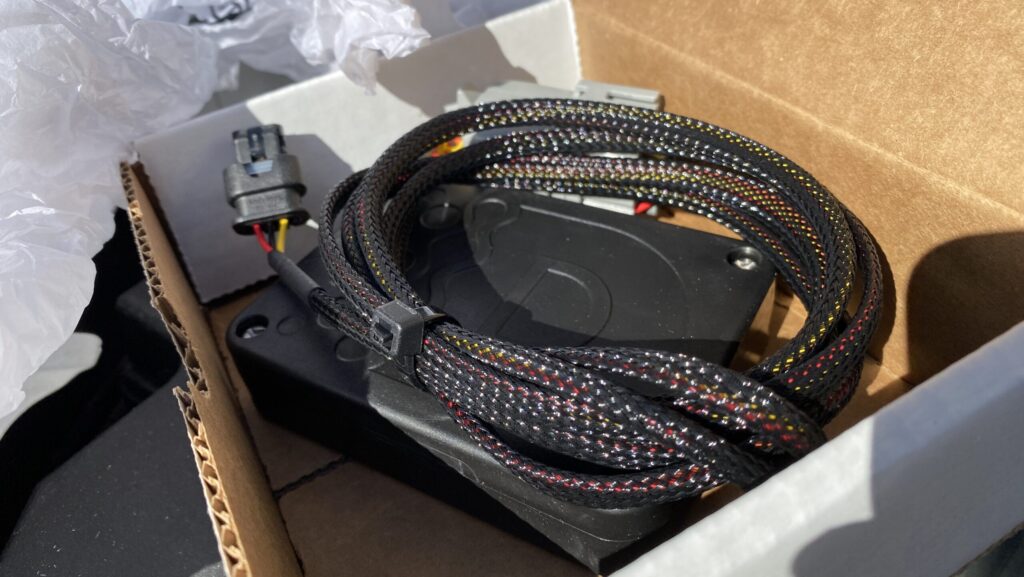

E85 has become favorable among tuners and weekend warriors for its ability to yield higher horsepower ratings without forcing you to shell out big time on normal race gas. In fact, the E85 actually has a higher octane rating, equal to anywhere between 100 and 105, and features a faster, more efficient burn and flame propagation. E85’s traits carry a whole heap of performance buffs, such as burning cooler, reducing engine temperatures to mitigate knock (premature detonation), allowing compression ratios to be increased thanks to the lessened likelihood of knock, and allowing turbocharged cars to spool marginally faster due to faster burns creating exhaust gases sooner.
All that jargon sounds like a win, win, win! And it should, theoretically, be a win for those running E85. Or at least on dyno days, like the videos embedded at the end.
Debunking flex fuel myths and explaining real cons
Yes, it was very much a concern that E85 was bad for fuel systems, and it’s very much the truth that it’s not the most practical fuel out there for a number of reasons. So, let’s take a quick dive into what’s actually wrong with E85 and what old-timey myths we can dispel to irrelevancy.
First, the real cons:
- It’s not as widespread at gas stations. Yes, you’re right. Not every gas station has it, and E85 is more common in some states and cities than others. In some places, it’s as easy as traveling to a nearby pump, whereas in others, it’s probably better to buy what you need and store it as you probably won’t find another E85 pump after that. Speaking of storing it.
- It’s hard to store long-term, as ethanol can attract water, not only diluting the fuel but posing serious risks of rust and water vapors damaging fuel system components if left to sit. J.D. Power also notes that E85 can sit for anywhere between one to three months due to the fuel being likely to oxidize and lose combustibility over time. Compare that to three to six months for regular gasoline and roughly a year or more for diesel.
- Old cars don’t really like it. There’s a reason some gas stations, such as Maverick, offer totally pure, ethanol-free gasoline. It’s friendlier to classic rides. Ethanol, being an alcohol, is an anti-lubricant and can dry out and damage materials in older fuel systems. On top of all that, they’re trickier to tune for E85 if the car is carbureted, as the carb has to be rejetted every time you swap fuel types.
- While it’s a cleaner, cooler burning fuel, it’s actually not as power-dense as gasoline, meaning you need to use more of it to make meaningful gains. Sources range from 10% to 33% loss in power density, meaning your fuel economy dips down just as much to compensate since your ECU will adjust to expend more fuel. Colleagues who ran flex fuel in their tuned Scion FR-Ss and Toyota 86s did indeed see power gains at the expense of 3 to 4 mpg during regular driving.
Now, the myths:
Perhaps this is one big overarching myth. The notion that E85 is a dangerously corrosive and volatile fuel is a load of crap. Sort of. The alcohol content can dry out suboptimal materials in older or ill-equipped cars and leave a varnish on metal components, but it’s not going to eat away at your fuel system, cause it to blow up, or suddenly chew a hole in your tank. High-ethanol fuel is frequently confused with ethanol race fuels, which can have corrosive additives in them, relegating them to only short-term uses such as racing, or methanol, which actually is far more corrosive than ethanol.
While ethanol may not have been as safe in older vehicles, it’s widely regarded that most modern cars are more than capable of handling higher-ethanol blends. There’s at least a 10% blend of ethanol in regular pump gas, anyway. The high alcohol content can even function as a fuel cleaner, clearing out deposits from lines and injectors, similar to SeaFoam, which also has a high alcohol content. Now, that doesn’t mean go run E85 in your car right now, as you still need a tune for your computer to know what to do with the higher octane rating.
Make sure your car is tuned. Make sure your vehicle is equipped to handle it with the right sensors and modern, resilient components. And if you’re still concerned, the popular safeguard for peace of mind is typically one or two tanks of regular, top-quality pump gas a month.
Another fun fact. It’s also been noted that OEM flex fuel systems are less than stellar at running on E85. Introducing flex fuel into their mainstream cars was a bit of an afterthought and a way for manufacturers to get federal credits following the passage of the Alternative Motor Fuels Act in 1988. Interestingly, it’s akin to how late 2000s and early 2010s EVs were nothing more than mere “compliance cars” whose sole purpose of existing was to literally just exist for the company’s benefit in the wake of strict regional emissions and fuel economy laws.
Installing the hardware
After a quick stop at a speed shop I used to work at to snag a flex fuel kit for a bargain, I was on my way to meet a friend, who reassuringly performed these installs numerous times before. It was my off day over an extended New Year’s holiday weekend. I was on my merry way to see a friend for a quick garage hangout/install job. What could go wrong?
See, I can say that because it already happened. So there’s nothing to jinx. Right?
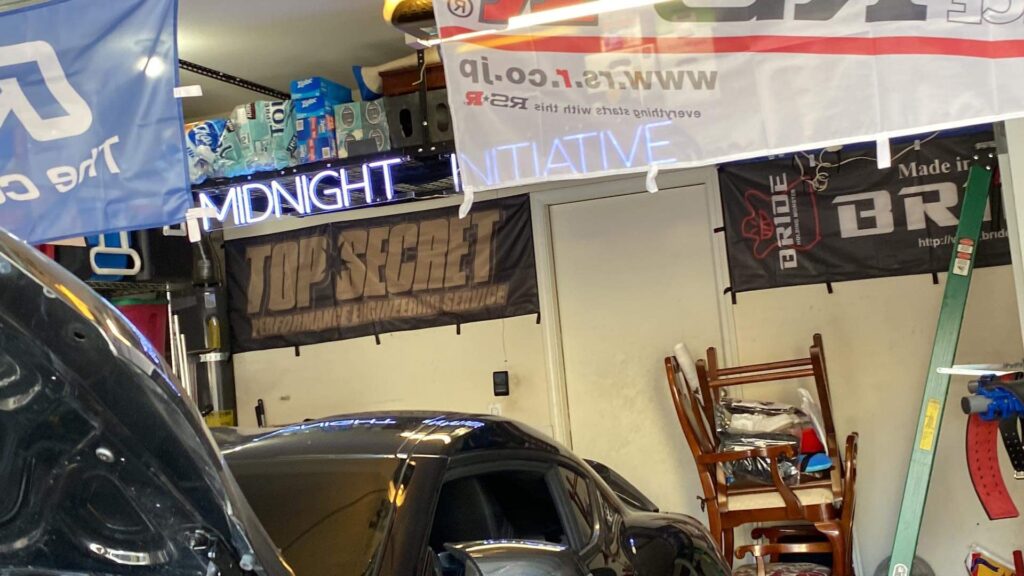

Thankfully, the BRZ/GR86 platform is as spacious inside as ever, with a wide-open engine bay allowing for easy access for damn near anything (except spark plugs). As my mechanic friend explained to me, all the work needed for the hardware would take place solely near the driver-side shock tower. So, as for what the installation entails.
I kid you not. It was as quick as letting the fuel system sit so it could depressurize a bit, opening the lines so we could install the new lines from the kit, and feeding those new lines into the flex fuel sensor that sat nice and pretty beneath the base of the strut tower brace.
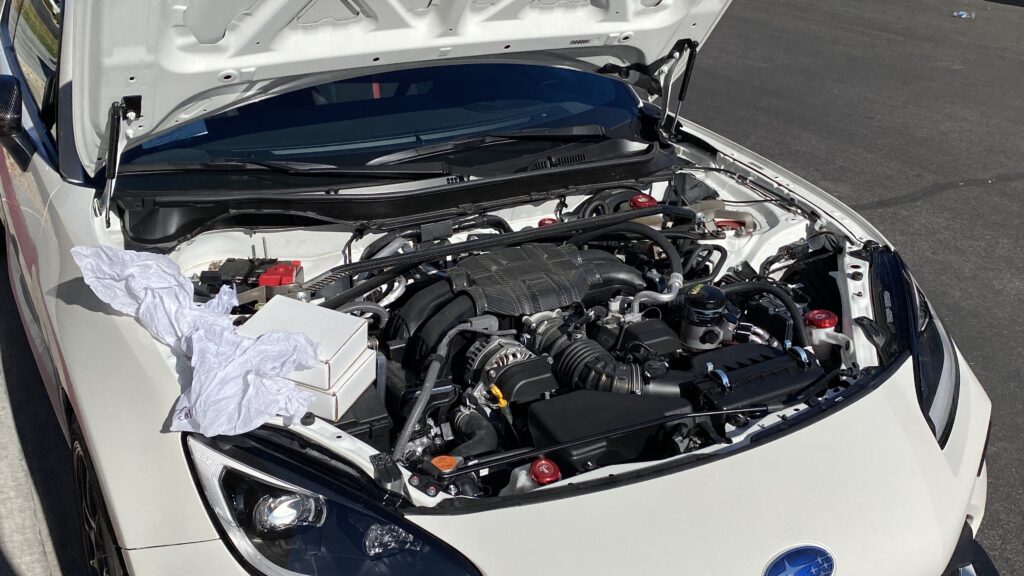
Bam. Easy. And we only spilled a little bit of fuel after impatiently starting before the system could depressurize further. Oh, and when removing the strut tower brace to install the flex fuel sensor beneath it, we may have dropped a piece of hardware that braces against the master cylinder to keep it from moving under hard braking. It doesn’t thread into anything. It simply sits atop a threaded stud, and the pressure of threading the stud into the strut tower brace pins it against the master cylinder. When you relieve the pressure to remove the brace, it simply falls into the abyss of the engine bay, never to escape because there’s a skid plate underneath from the factory.
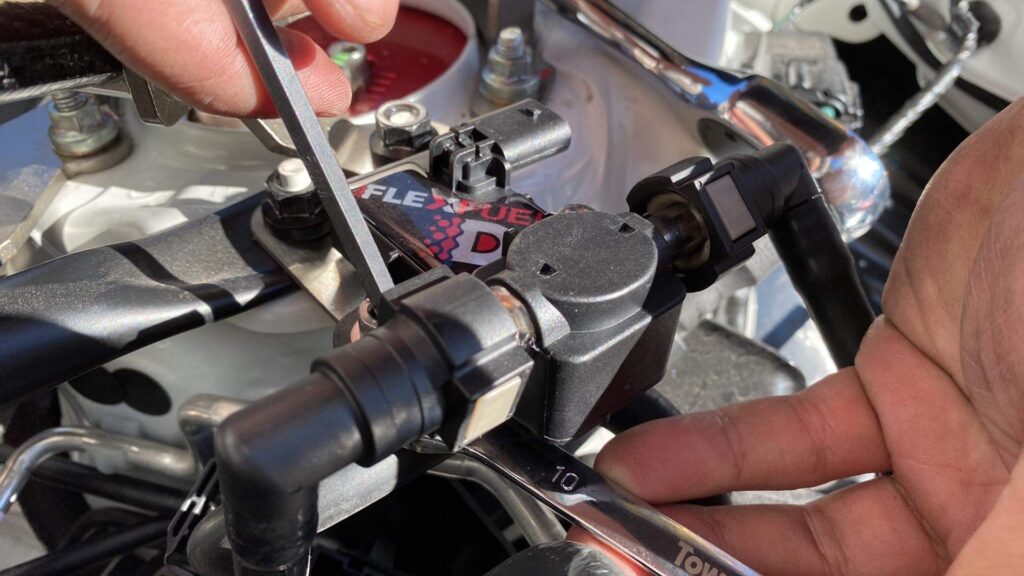
Thank you, Cusco, and thank you, Subaru. Very cool. So now what would’ve been a 20-minute install extended to nearly 45 as we busted out ye ol’ jack and a magnet tool to fish for this piece of the Cusco master cylinder brace from under and on top of the car. It was a humorously stupid and frustrating endeavor that finally ended in success after shaking a car a bunch, then jacking up one side with the wheel cranked to full lock so we could reach from inside the wheel well.
Hey, we did it, didn’t we? And in the end, we installed the kit. Er, actually, my friend did. Thanks, Kaleb. A Bluetooth module included with the kit mounts near the firewall and lets me read the current ethanol level via a phone app, which, on pump gas, was a whopping, dyno-breaking, tire-shredding…
7%. I’ll take it!
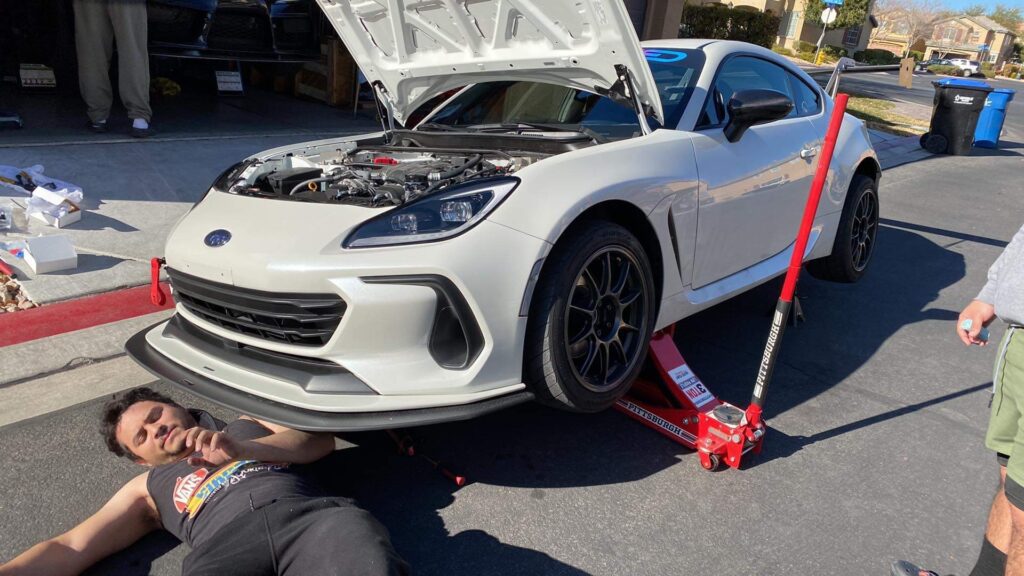
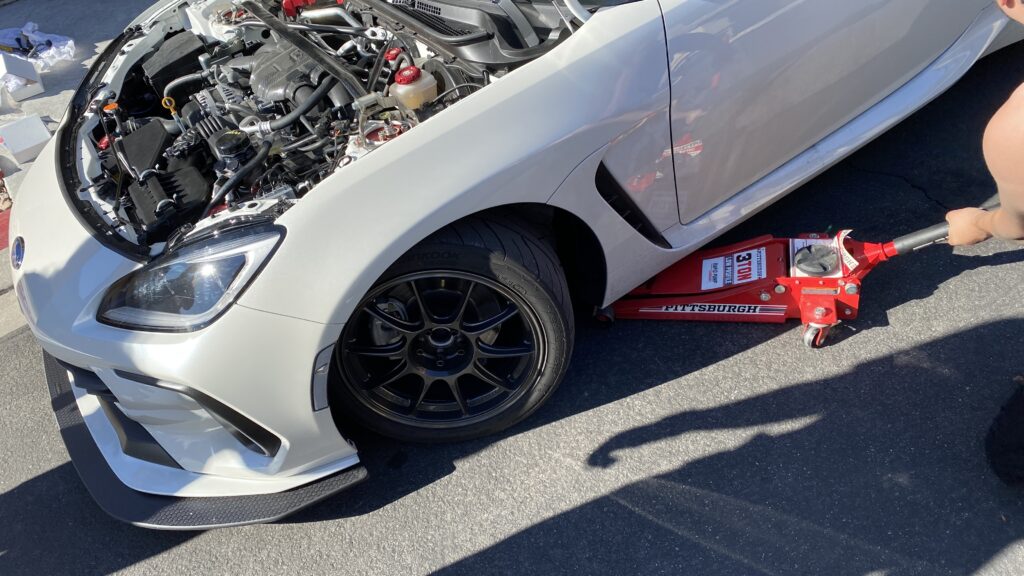
Tune coming soon!
No. There’s no tune at the time of writing. But there will be! And you bet I’ll be back to report on my findings once I get this sucker all pumped up with corn juice. Most tuners expect gains of anywhere between 20 to 30 horsepower on this FA24 flat-four engine with E85 alone, and there are plenty of dyno videos that can back those claims. Will I count myself lucky? We shall see.
Knowing my luck, I wouldn’t be surprised if a piano falls on this car a day after the tune file comes in my email inbox. But fingers crossed. May the Car Gods, please, for the love of all that’s internally combustible, bless me with the same power gains these lucky lads below have experienced.










